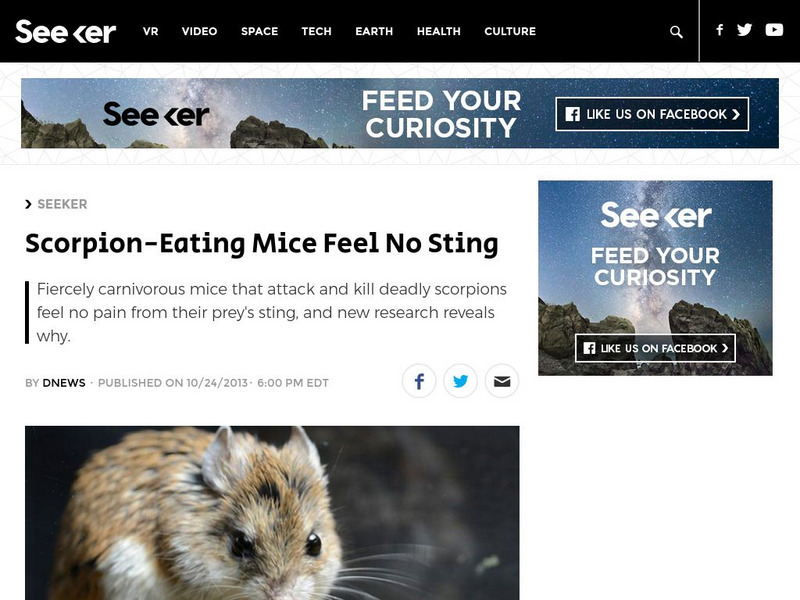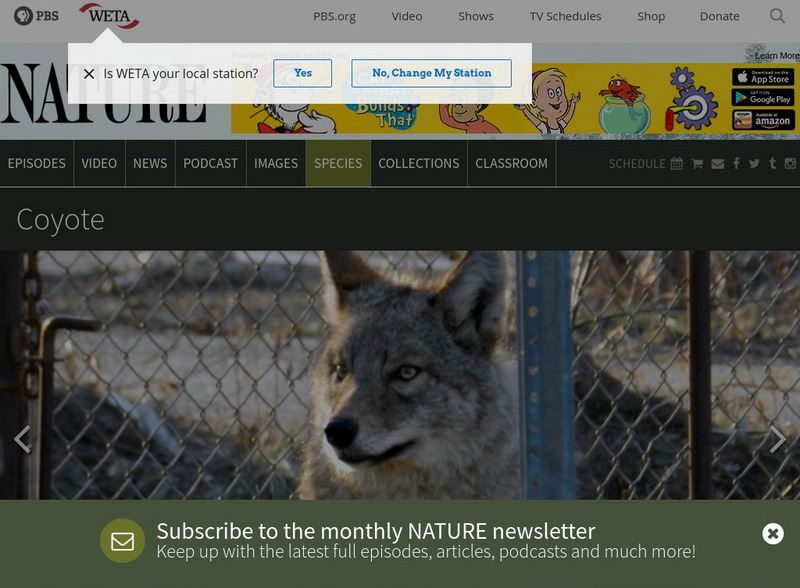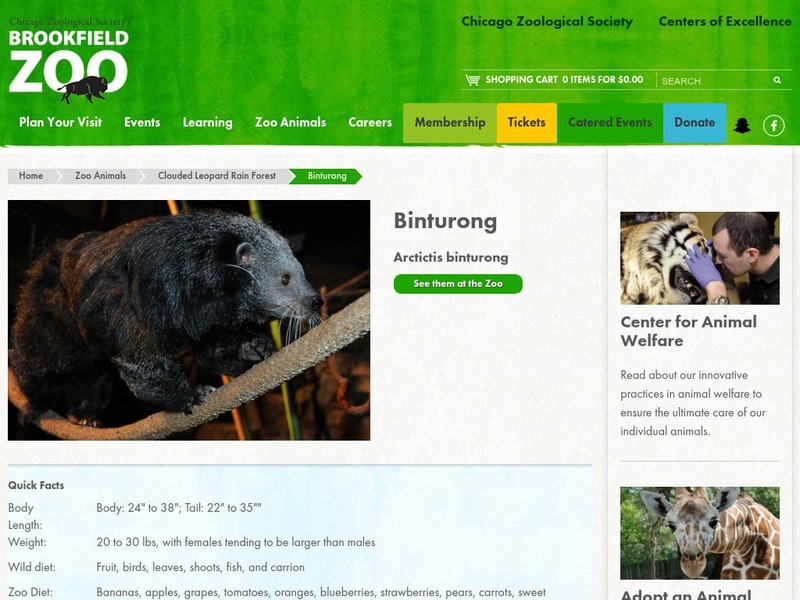Seeker
Seeker: Week of 10 28 13: Scorpion Eating Mice Feel No Sting
Article reports on the scientific discovery that the venom of a scorpion has an unusual reaction in grasshopper mice, actually blocking the mouse from feeling pain instead of inducing it.
Concord Consortium
Concord Consortium: Stem Resources: Variations and Adaptations
Experiment with variations in grass to see which size grows best with different amounts of water. Understand that grass that can live in different levels and change to its environment has a better chance of surviving. Also, experiment...
PBS
Pbs Learning Media: Bird Food and Bird Beaks
There are almost as many types of bird beaks as there are types of food that birds like to eat. This collection of images shows a wide range of beaks and the types of foods handled by each.
The Association of the British Pharmaceutical Industry
Active Science: Humans and Animals: Food [Pdf]
An interactive online game to explore what animals eat.
Smithsonian Institution
National Museum of Natural History: Where Do Mammals Live?: Wildebeest
Brief illustrated overview of the wildebeest and an accompanying video demonstrate the physical adaptations that allow this animal to eat and digest tough African grasses.
Lincoln Park Zoo
Lincoln Park Zoo: Grevy's Zebra
Learn the difference found in this species of zebra, where it is found in the wild, how it has adapted to its niche environment, what it eats, and its reproduction habits.
Lincoln Park Zoo
Lincoln Park Zoo: Western Lowland Gorilla
Use this site for information on the Western Lowland Gorilla. The information consists of special adaptations the gorilla has had to make, what it looks like, where it is found in the wild, what it likes to eats, and what its...
PBS
Pbs Nature: Coyote
What do you know about coyotes? Learn more about how adaptable this animal is to new surroundings when you check out this informative resource. Explore this website to find more facts and information ranging from what these animals eat...
Smithsonian Institution
National Museum of Natural History: Hall of Mammals: Leopard Seal
Brief overview of the leopard seal and an accompanying photo demonstrate the physical adaptations that allow this animal to eat meat.
Smithsonian Institution
National Museum of Natural History: Hall of Mammals: Pygmy Marmoset
A brief overview of the pygmy marmoset and accompanying photos demonstrate the physical adaptations that allow this animal to eat.
Smithsonian Institution
National Museum of Natural History: Hall of Mammals: Crabeater Seal
Brief overview of the crabeater seal and accompanying photos demonstrate the physical adaptations that allow this animal to eat and survive.
Smithsonian Institution
National Museum of Natural History: Hall of Mammals: Giant Panda
Brief illustrated overview of the giant panda and an accompanying video demonstrate the physical adaptations that allow this animal to eat and why it has become an endangered species.
Smithsonian Institution
National Museum of Natural History: Hall of Mammals: Red Panda
Brief overview of the red panda and accompanying photos demonstrate the physical adaptations that allow this animal to eat and survive in its habitat.
Smithsonian Institution
National Museum of Natural History: Hall of Mammals: Black Bear
Brief overview of the black bear and accompanying photos demonstrate the physical adaptations that allow this animal to eat and survive in their habitat.
Smithsonian Institution
National Museum of Natural History: Hall of Mammals: Beaver
A brief overview of the beaver and accompanying photos demonstrate the physical adaptations that allow this animal to eat and live in its habitat.
Smithsonian Institution
National Museum of Natural History: Hall of Mammals: Vampire Bat
Brief overview of the vampire bat and an accompanying photo demonstrate the physical adaptations that allow this animal to eat to survive.
Smithsonian Institution
National Museum of Natural History: Hall of Mammals: Sika
Brief illustrated overview of the sika deer and an accompanying video demonstrate the physical adaptations that allow this animal to eat and use its voice to attract females.
Lincoln Park Zoo
Lincoln Park Zoo: Straw Colored Fruit Bat
A fact sheet about the straw-colored fruit bat. The facts include a physical description, where they can be found, what they eat, and their reproduction habits. Also included are facts about special adaptations that the fruit bat has.
Lincoln Park Zoo
Lincoln Park Zoo: Amur or Siberian Tiger
This site provides detailed information on the Siberian Tiger. Information includes what they look like, where they live, what they eat, and how many cubs they have. Additional information about special adaptations they have.
Lincoln Park Zoo
Lincoln Park Zoo: Dwarf Crocodile
Offers great information of the West African Dwarf Crocodile. Information includes what they look like, where they are found, what they eat, and how often they reproduce. Special adaptations that the crocodile has made are also included.
Lincoln Park Zoo
Lincoln Park Zoo: African Lion
A wonderful research tool for gathering information about the African Lion. Information that is given includes what it looks like, what it eats, where it lives, its life history. Additional information included is about its special...
PBS
Nature: Cheetah
What are some of the cheetah's distinctive characteristics? Come and check out this resource featuring fun facts and information about the cheetah.
PBS
Pbs Nature: Orangutans
Come and check out this awesome resource on orangutans. Students who need help narrowing their informational search will benefit from this clear and concise resource.
Chicago Zoological Society
Chicago Zoological Society: Zoo Explorer: Binturong
Learn all about the binturong by browsing this reference from the Brookfield Zoo. In addition to quick facts and a photo, this animal guide provides information on the appearance, habitat, and eating habits of this well adapted animal.







